This article will explore this feature and how you can use your camera’s hot shoe mount. [ExpertPhotography is supported by readers. Product links on ExpertPhotography are referral links. If you use one of these and buy something, we make a little bit of money. Need more info? See how it all works here.]
What is a Hot Shoe?
A hot shoe (or ‘hotshoe’) is a place to attach accessories to your camera. Most mid-to-high-end digital cameras have it. It is a square bracket usually placed in the top middle of the camera body. Products slip onto it and then screw down to secure the connection with the body. Analog cameras might also have an accessory attachment set in a similar position. We will talk more about the difference in a minute. This is a convenient place to mount attachments like an external flash. You can see readouts and have easy access to buttons and switches. The mount is usually placed to distribute the weight of the attached items and keep your camera stable.
Cold vs. Hot Shoe Adapters
If you look closely at the mount, you will see metal pins or disks. These electronic points allow cameras and the attached accessories to communicate. For instance, you trigger the flash when you press the shutter button. You may even have a flash with TTL (Through the Lens). Your flash uses the camera’s metering and figures out how powerful it needs to be. It is a kind of ‘auto’ mode for your flash. Hot shoes are not universal. The contact point is unique to each manufacturer. The attached accessory must be made to work with the specific contact point. This is why a Nikon flash will not work on a Canon. You can mount the speed light. But there will be no communication between the camera and the accessory. A cold shoe is an accessory mount without the communication system. The accessory may connect another way, but not through the mount. For instance, remote triggers may communicate through a cable. This is the technical definition of hot and cold shoes. But most photographers refer to the accessory mount on top of their camera as a ‘hot shoe’. It does not matter whether the accessory is communicating through the mount or not.
Compatible Hot Shoe Accessories
Covers
Consider buying a hot shoe cover. These slip into the mounting brackets. They protect the electronics from moisture and dirt. The product is inexpensive and blends into your camera’s body. But you can buy ones that include a bubble spirit level or add a designer element to your body.
Flash Unit
Each manufacturer makes its own external flash unit or speed light. There are also off-brand flashes. Make sure to buy the right one for your model.
Sony Canon Nikon
Radio Triggers
Flash remote triggers like PocketWizards activate studio speed lights. These are specific to both your camera’s model and lighting company. Remote triggers like the Pluto Trigger control your shutter and allow you to take long exposures.
Video Accessories
Constant lights like the Neewer video light direct a steady stream of light on your subject. If you take many videos, an external microphone like the Tascam TM-2X Stereo X-Y Microphone is a must-have.
Tethering
Wireless tethering like the Air Direct system lets you send images to a laptop or tablet. The larger screen helps you see detail.
GPS Receivers
Not all cameras collect location information. GPS receivers add coordinates to the EXIF data of the image. Make sure you get the correct accessory for your model.
Canon GP-E1 Nikon GP-1
Light Meter
Mounting a light meter on a film camera is a great idea. Keep your eyes open for the new Lime One currently on Kickstarter.
Brackets
There are many types of brackets available. Some allow you to mount multiple devices like a constant light and a microphone for video shooting. Handy are brackets for mounting smartphones or other devices like the Ulanzi SST-06 smartphone tripod.
Conclusion
A hot shoe is more than a mounting bracket. It allows you to connect external accessories that greatly expand the functionality of your camera. Get off auto mode and take stunning photos for life with our Photography Unlocked course!




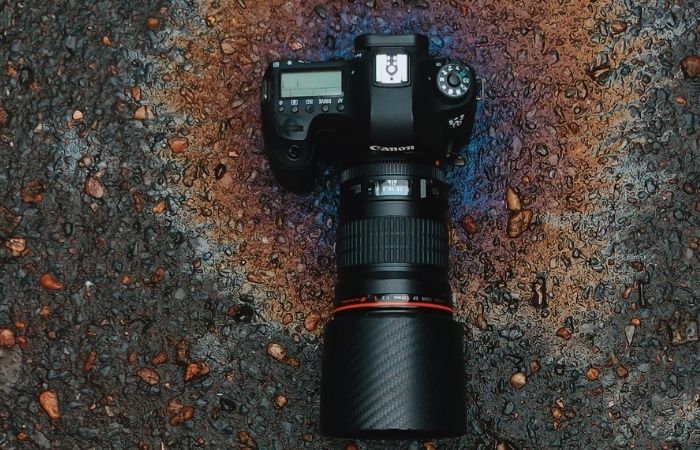
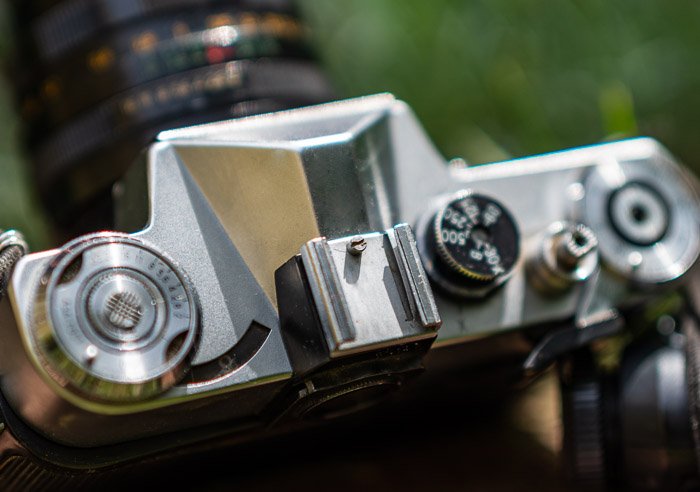
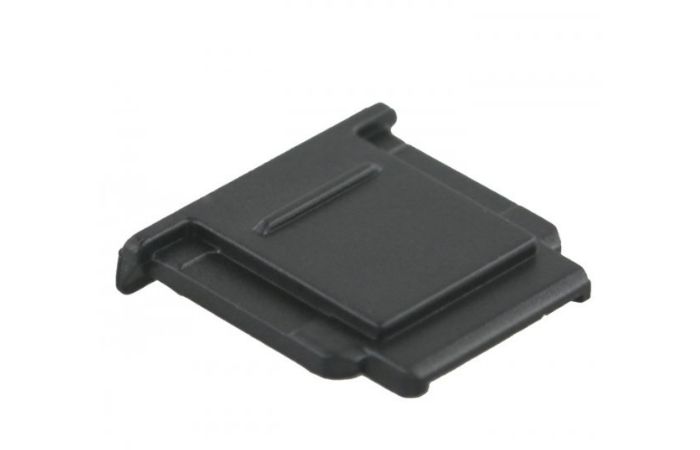

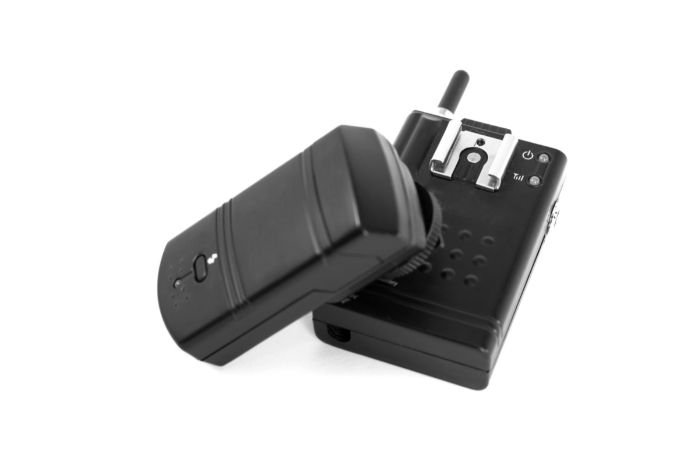
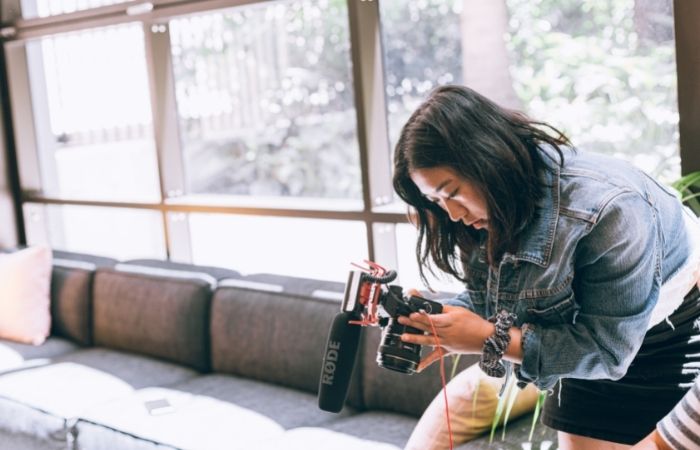
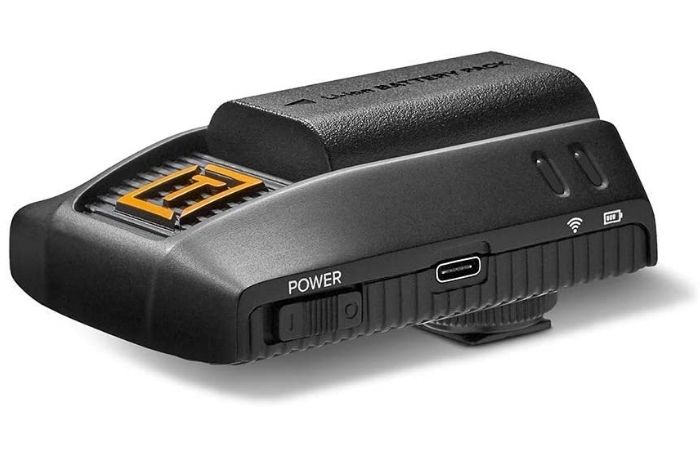

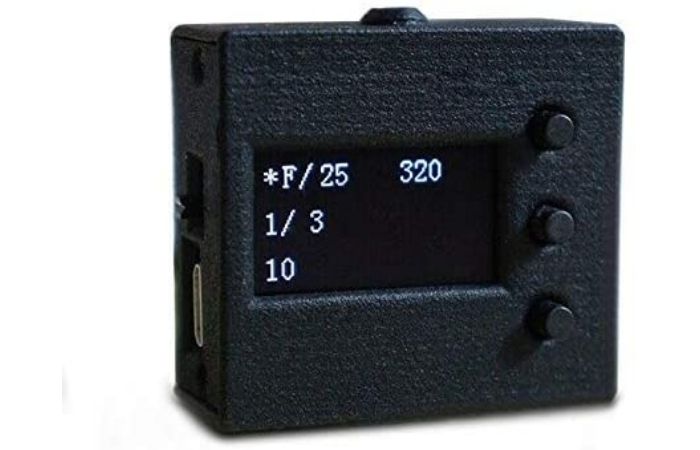
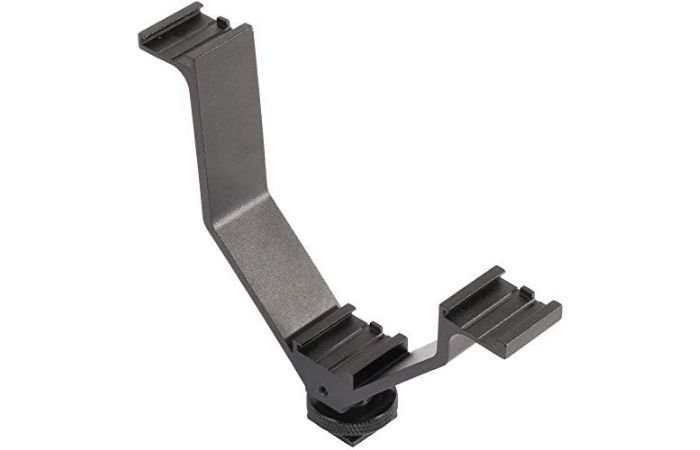


title: “What Is The Hot Shoe And How You Should Use It " ShowToc: true date: “2022-12-28” author: “Vincent Conlon”
This article will explore this feature and how you can use your camera’s hot shoe mount. [ExpertPhotography is supported by readers. Product links on ExpertPhotography are referral links. If you use one of these and buy something, we make a little bit of money. Need more info? See how it all works here.]
What is a Hot Shoe?
A hot shoe (or ‘hotshoe’) is a place to attach accessories to your camera. Most mid-to-high-end digital cameras have it. It is a square bracket usually placed in the top middle of the camera body. Products slip onto it and then screw down to secure the connection with the body. Analog cameras might also have an accessory attachment set in a similar position. We will talk more about the difference in a minute. This is a convenient place to mount attachments like an external flash. You can see readouts and have easy access to buttons and switches. The mount is usually placed to distribute the weight of the attached items and keep your camera stable.
Cold vs. Hot Shoe Adapters
If you look closely at the mount, you will see metal pins or disks. These electronic points allow cameras and the attached accessories to communicate. For instance, you trigger the flash when you press the shutter button. You may even have a flash with TTL (Through the Lens). Your flash uses the camera’s metering and figures out how powerful it needs to be. It is a kind of ‘auto’ mode for your flash. Hot shoes are not universal. The contact point is unique to each manufacturer. The attached accessory must be made to work with the specific contact point. This is why a Nikon flash will not work on a Canon. You can mount the speed light. But there will be no communication between the camera and the accessory. A cold shoe is an accessory mount without the communication system. The accessory may connect another way, but not through the mount. For instance, remote triggers may communicate through a cable. This is the technical definition of hot and cold shoes. But most photographers refer to the accessory mount on top of their camera as a ‘hot shoe’. It does not matter whether the accessory is communicating through the mount or not.
Compatible Hot Shoe Accessories
Covers
Consider buying a hot shoe cover. These slip into the mounting brackets. They protect the electronics from moisture and dirt. The product is inexpensive and blends into your camera’s body. But you can buy ones that include a bubble spirit level or add a designer element to your body.
Flash Unit
Each manufacturer makes its own external flash unit or speed light. There are also off-brand flashes. Make sure to buy the right one for your model.
Sony Canon Nikon
Radio Triggers
Flash remote triggers like PocketWizards activate studio speed lights. These are specific to both your camera’s model and lighting company. Remote triggers like the Pluto Trigger control your shutter and allow you to take long exposures.
Video Accessories
Constant lights like the Neewer video light direct a steady stream of light on your subject. If you take many videos, an external microphone like the Tascam TM-2X Stereo X-Y Microphone is a must-have.
Tethering
Wireless tethering like the Air Direct system lets you send images to a laptop or tablet. The larger screen helps you see detail.
GPS Receivers
Not all cameras collect location information. GPS receivers add coordinates to the EXIF data of the image. Make sure you get the correct accessory for your model.
Canon GP-E1 Nikon GP-1
Light Meter
Mounting a light meter on a film camera is a great idea. Keep your eyes open for the new Lime One currently on Kickstarter.
Brackets
There are many types of brackets available. Some allow you to mount multiple devices like a constant light and a microphone for video shooting. Handy are brackets for mounting smartphones or other devices like the Ulanzi SST-06 smartphone tripod.
Conclusion
A hot shoe is more than a mounting bracket. It allows you to connect external accessories that greatly expand the functionality of your camera. Get off auto mode and take stunning photos for life with our Photography Unlocked course!















